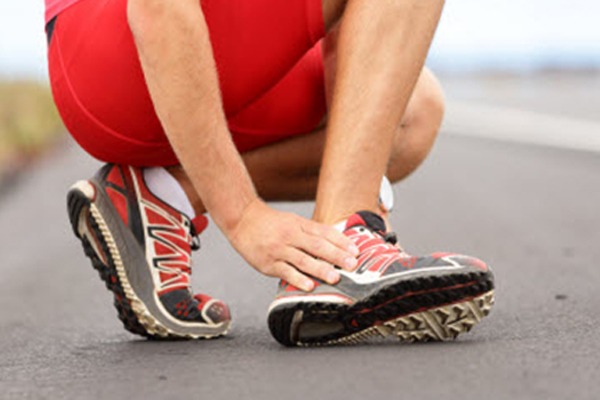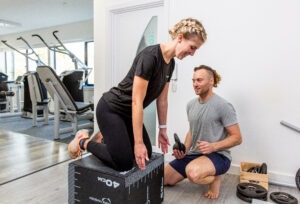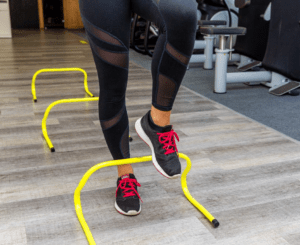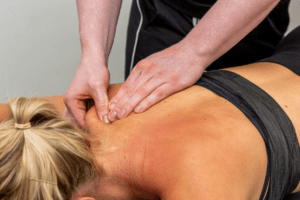What is an ankle sprain?
A sprain is an injury to a ligament, ligaments are strong bands that attach bones to other bones and provide each joint with stability.
An ankle sprain is one of the most common musculoskeletal injuries, it is estimated that ankle sprains account for between 3-5% of all emergency department visits in the UK, equating to approximately 5,600 incidents per day.
Typically this is a result of the foot twisting or rolling beyond its normal range of motion, typically known as an inversion injury. The incidence of ankle sprains is higher for sports involving jumping, changing direction and physical contact but can also be caused by stepping awkwardly off a curb.
How bad is it?
The severity of any sprain can graded as follows:
- Grade I = Mild stretching of the ligament.
- Grade II = Partial rupture (tear) of the ligament.
- Grade III = Complete rupture of the ligament also known as severe ankle sprain.
Signs and Symptoms:
One or more of the following symptoms may be present after injury:
- Pain
- Swelling
- Bruising
- Difficulty weight bearing
- Restricted range of movement
How is it diagnosed?
People take different routes in the early stages after injury, some may visit the emergency department, some visit their local GP, some visit other healthcare professionals such as physiotherapists and others play the “wait-and-see-how-it-feels-in-a-week” game.
TOPS advice is to seek assessment sooner rather than later to make sure no further investigations such as x-rays are needed, which would rule out a fracture.
Now we know what it is, how do we make it better?
Healing of ligaments usually takes around six weeks but this differs from person-to-person and is affected by the severity of the injury along with any other medical conditions.
In the first 72 hours after your injury there are important dos and don’ts and these can be remembered by helpful acronyms. Many people have heard of the RICE acronym for acute injuries.
- Rest – This means relative rest, i.e. you don’t need to go and lie on bed for a week but you do need to give your ankle regular rest periods.
- Ice – Place ice pack on the affected ankle, make sure you protect your skin by wrapping the ice ina cloth to prevent an ice burn. Ice should be used for 20 minutes at a time and left off for 20 minutes before re-applying. You can repeat this throughout day.
- Compression – Using protective bandaging or a tubigrip will reduce swelling, remove before going to sleep.
- Elevation – Swelling in your foot and ankle will drain into lymph nodes behind your knee or in your groin. To assist with this draining process you should elevate your ankle for regular periods.
But have you heard of the HARM acronym for what not to do?
- Heat – do not apply heat as this will prevent efficient swelling management.
- Alcohol – this will increase bleeding and swelling which slows healing. You may also be likely to injure further.
- Running – Use your pain as an indicator but running along with other strenuous weight bearing exercise will, in the first 72 hours, likely cause further problems.
- Massage – Again this will increase bleeding and swelling and slows the healing process.
Gentle movement of the foot, pulling the toes up, and pointing down, within the limits of the pain, also starts to reduce swelling and restore movement.
It is also important to manage the pain levels, this can be done by using analgesics such as Paracetemol, anti-inflammatories medications such as Ibuprofen and application lotions such as Ibuleve. Current UK guidelines state that anti-inflammatory medications should be started after 48 hours after injury as there is evidence that initially it can delay the healing process. Please consult your general practitioner for further advice.
How do I return back to normal?
As time goes on further rehabilitation exercises need to be completed to return you to your normal physical activity. Our follow up article Ankle Sprains: Rehabilitation and Return to Sport will provided you with this information.
We hope you found this information helpful, please don’t hesitate to contact us to ask any questions or to arrange an appointment.



